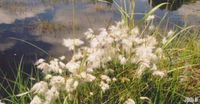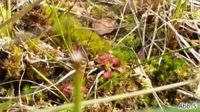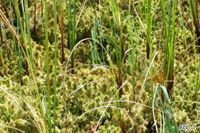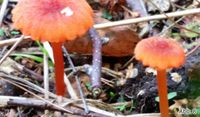Flora in the moor
Its fruits are a magnificent white and its blossom unassuming
When the cotton grass bears seed, large areas of the moor turn white (Figs. 3). These are the fruit clusters. By contrast, the blossom of the 15 different species of cotton grass is rather inconspicuous.
Sundew is small (Fig. 4) and its preferred habitat is on the connecting paths with the peat moss (Figs. 5 and 6).
Peat moss can dry out and turn a whitish colour in the summer; then comes to life and turns green again when moisture returns. Peat moss and cotton grass can be admired at the pools and the by the ditch on the museum grounds (Fig. 7). There are 35 species of peat moss in Germany. Ours has not yet been identified. Mushrooms grow alongside the sundew on the connecting paths (Fig. 8). Orchids grow on the moorland meadows (Fig. 9).
Links to other stations in the museum - in English language:
<1> <2> <3> <4> <5> <6> <7> <8> <9> <10> <11> <12> <13> <14> <15> <16> <17> <18> <19> <20> <21> <22> <23>






